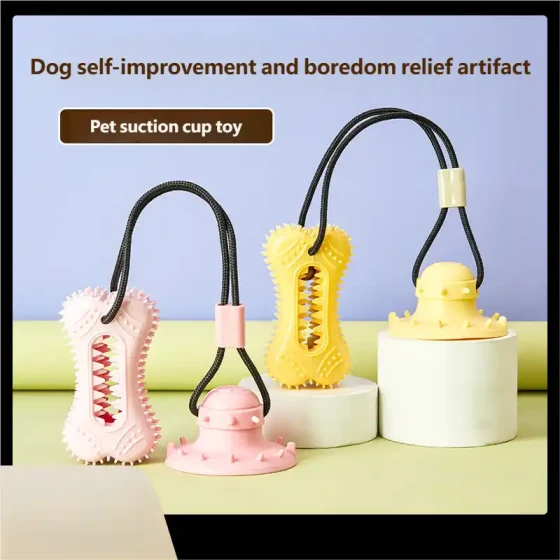Dog gnawing bones is a misconception! —— Pet owners must know

Pet Dog
Many pet lovers often proudly tell me, Teacher Wang, I often give our dog chicken liver or rice, she eats so happily… Teacher Wang, our dog really loves chocolate, she gets especially excited every time she eats it… Teacher Wang, my dog likes to drink milk… and so on. These are common feeding habits among pet lovers and widespread misconceptions in pet feeding due to the long-standing lack of knowledge about pet nutrition in our country.
Pets have their own nutritional needs and dietary safety habits. However, many households are still stuck feeding pets leftover food. Even those who are more advanced mostly buy some chicken liver or duck liver and mix some cornmeal or flour to feed pets. Besides economic factors in feeding, there is a great deal of ignorance and backwardness regarding pet dietary safety and pet nutritional concepts. Because of this, our beloved pets around us face constant health threats. People often mistakenly think that what they like to eat is also what pets like. In fact, four-legged animals live more delicately than we two-legged ones. Cats are carnivores; even dogs are primarily carnivorous omnivores with extremely sensitive olfaction. Their taste buds are roughly one-sixth of humans’, and their taste sensitivity is generally undeveloped. This makes them very different from humans. Humans like to chew slowly and savor food, whereas pets generally use their jaws to quickly tear food apart and then swallow it whole without a “tasting” process as humans do.
Although pets have been domesticated for nearly a thousand years, they still retain many primitive animal habits. For example, pet dogs always eat all the food before them because they worry about the instability of hunting food and then slowly digest it. Cats retain more of a habit for solitary eating, preferring to consume food 20 to 30 times continuously day and night. These feeding habits determine that there is a large difference between pets and humans in choosing pet food, vastly different from human table food.
Perfume is poisonous, chocolate is even more toxic
The caffeine in chocolate is a poison to pets, severely affecting blood circulation, causing spasms, irregular heartbeats, and more. Chocolate mainly contains derivatives of methylxanthines; caffeine and theobromine belong to this category. Therefore, the higher the chocolate content, the greater the harm to pets. Usually, 200-400 grams of chocolate can cause muscle spasms and shock. After ingesting theobromine and caffeine, a dog’s heart rate can suddenly rise to more than twice normal and can die within a short time.
Milk tastes good, dogs don't say hi
In real life, many pet lovers like to feed pets milk or soak food in milk for them. However, often after eating, they find their pets have diarrhea, vomiting, or other discomfort symptoms. But not every time or every pet exhibits this; owners then think their pets have weak constitutions or are sick. Actually, the main reason is that pets lack lactase in the digestive tract to break down lactose and sucrose in milk, commonly resulting in lactose intolerance. If such pets drink milk, they may experience diarrhea, bloating, dehydration, etc. Even if no adverse reaction occurs, plenty of water should be offered after milk to allow pets free drinking. Some pet food companies design lactose-free milk products or yogurts rich in probiotics specifically for pets, which can be fed safely. The milk we drink daily is generally not suitable for pets.
Dog gnawing bones is a misconception
Dogs loving to gnaw bones is as certain as the sun rising from the east; we have believed this since birth. But from the perspective of pet food safety and pet nutritional science, giving dogs bones is unscientific.
Besides rich calcium, bones contain significant magnesium. Excess magnesium absorbs considerable water in the pet’s intestines, causing constipation. Excess magnesium is excreted via urine as magnesium ammonium phosphate crystals, which can severely block the urethra, causing urinary retention in the bladder. When magnesium is excessive, pets may show symptoms like coma, diarrhea, decreased appetite, anorexia, and even death in severe cases.
Additionally, when pets gnaw bones, the bones often crack, especially small chicken bones, fish bones, etc., easily turning into sharp splinters. These can pierce the pet’s throat or get stuck in the esophagus, harming the pet. Even larger beef or pork bones can injure the digestive tract. Many small bone fragments sticking together can obstruct normal intestinal peristalsis.
Pet, your mom won’t let you eat chicken liver and duck liver at home
I believe that even today, many pet owners persistently feed their pets large amounts of chicken liver or duck liver daily or mix these livers into other food to feed their pets.
Indeed, animal liver is one of the favorite foods of pets. In the animal world, we often see animals start eating their prey's internal organs first, which is enough to show the internal organs are the most favored food of pets. However, chicken liver and duck liver contain high amounts of vitamin A, and excessive long-term intake can cause vitamin A toxicity in pets. Dogs generally show symptoms such as osteoporosis, gingivitis, tooth loss, dry skin, or hair loss. Cats may show cervical vertebra dislocation and bone fragility.
Therefore, moderate feeding of chicken and duck liver is necessary. Even when feeding liver, it must be cooked, cut into small pieces, used as seasoning with other food, and no more than twice a week. Just three pieces of chicken or duck liver per week can cause vitamin A toxicity in pets.
Eggs, cook before eating
Raw egg whites contain a protein called avidin, a biotin antagonist that depletes vitamin H in dogs. Vitamin H is an indispensable nutritional vitamin for pets' normal growth and maintaining healthy fur. Moreover, raw eggs usually contain pathogens such as Salmonella. Feeding raw eggs often results in pets having biotin deficiency symptoms, including poor growth, dermatitis, or hair loss. Later stages often include lethargy, reduced appetite, and anemia. Therefore, when feeding eggs to pets, be sure to cook them thoroughly before feeding.
There are many other foods pets should avoid, such as vegetables like onions, ginger, chili, and seafood like shrimp, squid, octopus, etc. In summary, any food that is difficult to digest, spicy, undercooked, or too high in fat should be avoided or given sparingly, as these foods can easily harm pets’ health.





